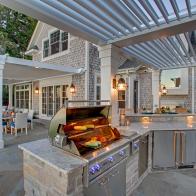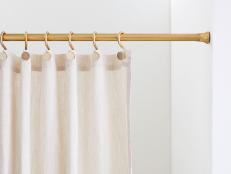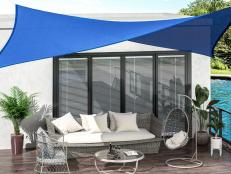The Benefits of Green Building to Homeowners
Besides benefiting the environment, the builder and the community at large, green building benefits the homeowner by providing better durability, energy savings, water savings and improved indoor air quality. Here's a closer look of each of those benefits and the green building materials and practices typically used to achieve them.
Durability
A green home is a durable home. For a homeowner, that means less work and expense to maintain the home properly, and components of the home won't need to be replaced as often, if ever. Green building materials that foster durability include:
- Durable roofing materials. Some have 40- or 50-year warranties.
- Recycled-content decking. Made of recycled plastic mixed with wood-waste fibers, this decking can last up to five times longer than traditional wood decking, and it never needs to be treated or painted.
- Chemical-free pest controls. Discourage termites and other pests by separating all exterior wood-to-concrete connections with metal or plastic fasteners or dividers and by locating all new plants at least 36 inches from the foundation.
Energy Savings
Energy efficiency is the cornerstone of every green home. Besides saving homeowners money through lower utility bills, an energy-efficient home may save some costs during construction. In addition, an energy-efficient home is a more comfortable home. Energy-efficient construction practices include:
- Construction of a tight thermal envelope. Sealing to reduce air leakage, designing and locating ductwork to minimize energy loss and choosing low-emissivity windows will all help to decrease a home's heating and cooling requirements.
- Installation of a properly sized HVAC system. A downsized HVAC system can be used when the thermal envelope is of high quality. Smaller HVAC systems can actually provide greater comfort and lower the homeowner's energy costs. Smaller equipment also can be less costly upfront, which may save the homeowner money during construction.
- Advanced (optimum-value engineering) framing techniques. Framing the home with 2-by-6 studs spaced at 24 inches allows the use of more insulation than conventional 2-by-4 studs spaced at 16 inches allow. This saves heating and cooling energy, improves comfort and may allow the downsizing of heating and cooling equipment. What's more, the 2-by-6 framing technique reduces wood use and labor costs, which may save the homeowner money during construction.
Water Savings
Green building practices that reduce the amount of water it takes to run a home can be especially important in dry states such as California, Arizona and Nevada, which have water-use restrictions. Water-saving practices for both indoors and outdoors include:
- Installation of high-efficiency appliances. Installing Energy Star-rated water-use appliances such as dishwashers and clothes washers can significantly cut a home's water and energy use.
- Efficient plumbing-system design. Reduced hot-water runs, insulated hot-water pipes and high-efficiency toilets that use 1.3 gallons of water or less per flush will reduce the homeowner's water and energy use and costs.
- New-generation landscape watering. High-efficiency irrigation systems such as low-flow drip systems, bubblers and low-flow sprinklers minimize overspray and evaporation and reduce runoff. This can dramatically reduce landscape water use while preventing plant disease and minimizing weed growth.
Healthier Indoor Air
Green homes have better indoor air quality (IAQ) than conventional homes, making the indoors physically healthier and more comfortable for homeowners. Green building uses these practices to help achieve better IAQ:
- Minimization of volatile organic compound (VOC) emissions. Using safer products, including low-VOC paints, cleaners and adhesives, in the home reduces homeowner exposure to formaldehyde, a known human carcinogen.
- Elimination of mold potential. Mold can cause homeowners respiratory and other health problems. A properly sealed and ventilated building envelope prevents unwanted moisture in the home and enables effective drying for those parts of the home that do get wet. Eliminating water issues will prevent mold growth.
- Installation of radon-mitigation systems. Radon-mitigation systems typically are set in the foundation and allow harmful radon gas from the surrounding soils to be vented to the home's exterior. This will significantly reduce homeowners' level of exposure to radon, which the Environmental Protection Agency estimates may be the second-leading cause of lung cancer.
Homeowners can benefit greatly by owning a green home. The key to encouraging more green building is to educate homeowners that if they decide to go green, they can have a more durable, more energy- and water-efficient and healthier home for about the same cost as a conventional home.
.-Battle-on-the-Beach-courtesy-of-HGTV.-.jpg.rend.hgtvcom.196.196.suffix/1714847929029.jpeg)








































